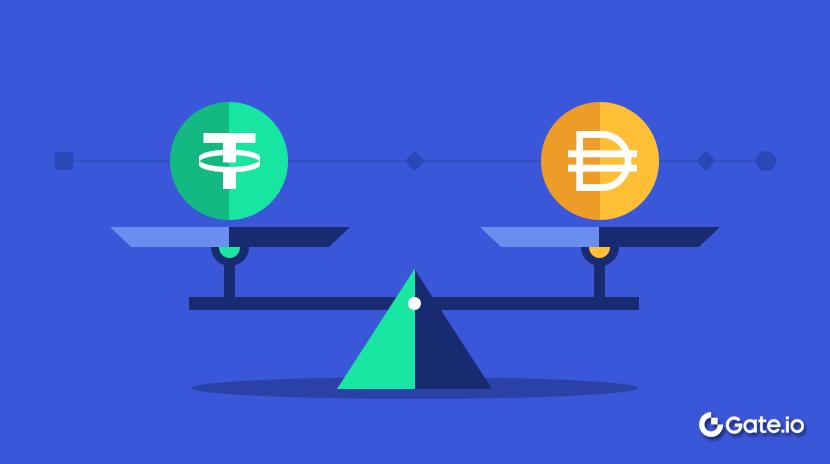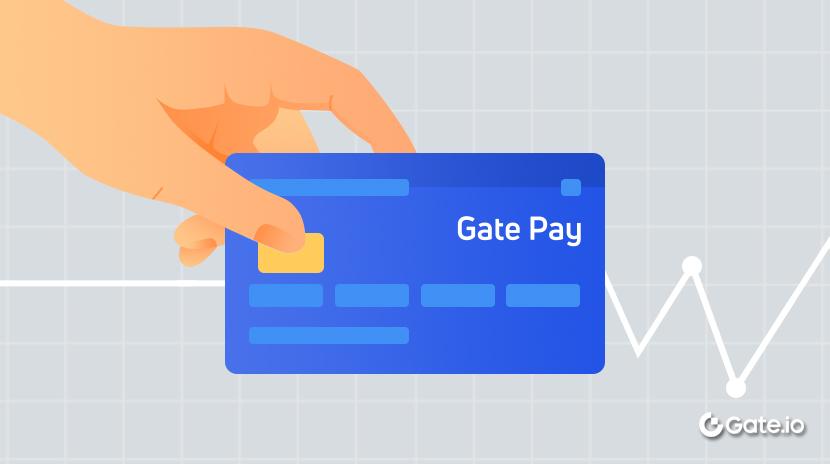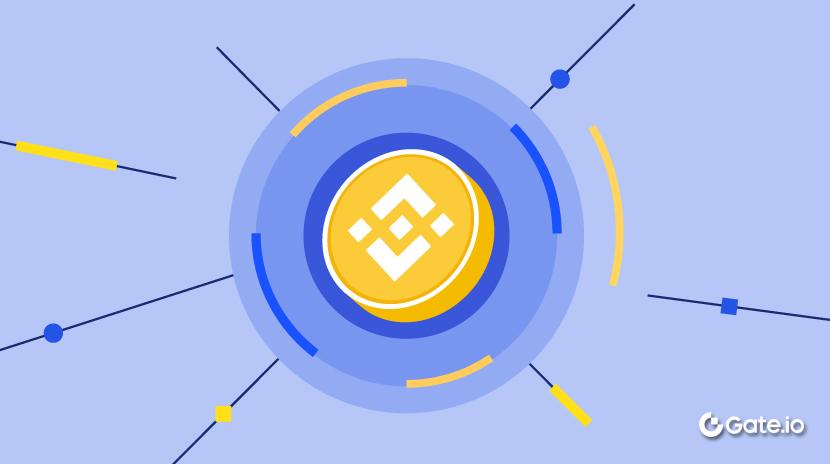Дослідження Gate: Події Web3 та розвиток технологій криптовалют (14 - 20 березня 2025 року)
Передмова
Цей звіт узагальнює серію значущих подій у секторі блокчейну та криптовалюти з 14 по 20 березня 2025 року, включаючи запуск Aave програми Horizon, спрямованої на інституційні ринки децентралізованих фінансових активів реального світу; неуспіх пропозиції Solana SIMD-0228, що призвело до зупинки плану коригування інфляції; запуск фьючерсів Solana CME з обсягом торгів приблизно на 38,000 SOL; плани Raydium запустити платформу для запуску токенів LaunchLab; та плани Фонду Ethereum активувати оновлення Pectra на тестнеті Hoodi 26 березня. Ці події демонструють жвавість криптовалютного ринку та вказують на майбутні тенденції розвитку.
Абстракція
- Aave представляє ініціативу Horizon для децентралізованих фінансових активів на рівні інституцій реального світу
- Пропозиція SIMD-0228 Солани не пройшла, зупинивши корекції інфляції
- Нові фьючерси CME на Solana бачать торговий обсяг у 38 000 SOL
- Raydium готується представити LaunchLab, нову платформу для запуску токенів
- Фонд Ефіріуму запланував оновлення Pectra для тестової мережі Hoodi на 26 березня
Основні події та оновлення
3/14 Aave Introduces Horizon: A New DeFi Platform for Institutional Real-World Assets
Компанія Aave Labs представила Horizon, революційну програму, яка з'єднує традиційну фінансову сферу з DeFi через активи реального світу (RWA). Перша пропозиція платформи дозволить інститутам використовувати токенізовані грошові ринкові фонди як заставу для стабільних кредитів, переважно за допомогою власної стабільної монети GHO від Aave.
Визначним елементом Horizon є його система RWA з дозволом, яка створює безпечне та відповідне середовище для участі інституційних інвесторів у DeFi. Цей підхід безпосередньо вирішує ключові питання традиційних фінансових установ, спрощуючи їм вступ до простору децентралізованих фінансів, зберігаючи при цьому їхні регуляторні вимоги.
Запуск є важливим, оскільки RWAs набирають популярність в DeFi, і великі фінансові установи все більше звертаються до технології блокчейну для управління активами, рішень щодо ліквідності та кредитних операцій. Програма Horizon від Aave має на меті здійснювати піонерські інституційні послуги DeFi, що потенційно може підвищити як ефективність капіталу платформи, так і прийняття GHO. Ця ініціатива є значущим кроком у злитті DeFi та традиційних фінансів (TradFi), створюючи передумови для ширшої інтеграції RWAs та посилюючи лідерство Aave в секторі DeFi.
3/14 Пропозиція SIMD-0228 Solana не пройшла, зупинивши плани щодо інфляційної корекції
Пропозиція щодо поліпшення спільноти Solana SIMD-0228 спрямована на коригування швидкості емісії токенів SOL з метою кращого адаптування до ринкових вимог, з можливими зниженнями інфляції до 80%. Пропозицію, авторами якої є Тушар Джайн та Вішал Канкані з Multicoin Capital, з підтримкою головного економіста Anza Макса Ресніка, запропоновано динамічно коригувати емісію токенів на основі рівнів стейкінгу. План передбачає зменшення емісії у випадку перевищення стейкінгу 50% для запобігання перестейкінгу та її збільшення у випадку, якщо вона менше 50%, для стимулювання участі шляхом отримання вищих виходів. Швидкість інфляції може варіюватися від 0% до поточного максимуму кривої емісії Solana, яка наразі становить 3,94%.
Проте пропозиція не пройшла через те, що загальна кількість голосів (як за, так і проти) лише склала 61,39%, не дотягуючи до необхідного порогу в 66,67%. Розбір голосів показав, що 43,59% - за, 27,40% - проти, 3,27% - утримались, а 25,72% валідаторів не брали участь у голосуванні, що призвело до недостатньої підтримки.
Хоча пропозиція не була прийнята, вона підкреслює постійний інтерес спільноти Solana до управління рівнями інфляції. У майбутньому можуть виникнути пропозиції з метою оптимізації токеномічної моделі SOL та досягнення ширшої згоди в межах децентралізованої системи управління.
18 березня CME запускає фьючерси на Solana з торговим обсягом 38 000 SOL
Чиказька товарна біржа (CME) офіційно запустила фьючерси на Solana (SOL) 17 березня, що широко вважається покладанням основи для затвердження ETF на місцях SOL. Нові ф'ючерси включають мікро-контракти (25 SOL) та стандартні контракти (500 SOL), що надають інституційним інвесторам більше можливостей для хеджування та інвестування в SOL. На перший день торгівля ф'ючерсами SOL досягла приблизно 38 000 SOL, з оціночною вартістю близько 5 мільйонів доларів.
Запуск фьючерсних контрактів на Solana CME відображає зростаючий інституційний інтерес до ринку криптовалюти, підтримуючи потенційне затвердження SOL-ETF на місці. Кілька установ, включаючи Grayscale, Bitwise та VanEck, подали заявки на SOL-ETF на місці, значно збільшуючи ринкові очікування на затвердження. Після затвердження SOL-ETF на місці значно спростить процес інвестування для роздрібних інвесторів, привертаючи більше традиційного капіталу на ринок Solana та потенційно підвищуючи ціни.
Крім того, останні події в екосистемі Solana в галузі DeFi, NFT та платіжних протоколів надають фундаментальну підтримку для його ціни. З запуском фьючерсів CME та припливу інституційного капіталу Solana перебуває в позиції для потенційних проривів як у технічному, так і в ринковому аспектах, можливо, підтягуючи його ціну до нових історичних максимумів.
3/19 Raydium запустить платформу випуску токенів LaunchLab
Raydium, децентралізована біржа та автоматичний маркетмейкер в екосистемі Solana, оголосила про запуск LaunchLab, платформи емісії токенів, розробленої подібно популярному pump.fun. LaunchLab пропонуватиме лінійні, експоненціальні та логарифмічні криві зв'язності для відповідності попиту на ринку та ціноутворення, дозволяючи стороннім користувацьким інтерфейсам встановлювати власні комісії для підвищеної гнучкості. Крім того, платформа підтримуватиме кілька котирувальних токенів поза SOL та інтегруватиме функцію блокування постачальника ліквідності Raydium, що забезпечить емітентам стабільний довгостроковий дохід від комісій.
Вступ LaunchLab відповідає на оголошені плани pump.fun розробити свій власний AMM, підкреслюючи жорстку конкуренцію в екосистемі Solana DeFi, особливо в запусках мем-токенів. Raydium спочатку призупинив проект, щоб уникнути конфлікту з партнерами, але негайно відновив розробку LaunchLab, коли pump.fun розкрили свої плани. Оскільки pump.fun забезпечує значний дохід для Raydium, LaunchLab є стратегічною ініціативою для захисту потоків доходів та збереження позиції на ринку. Проте, з урахуванням сильної користувацької бази та присутності на ринку pump.fun, успіх LaunchLab залежатиме від його користувацького досвіду, конкурентоспроможної структури комісій та здатності привертати високоякісні проекти.
20 березня Ethereum Foundation запланувала оновлення Pectra для тестової мережі Hoodi 26 березня
Фонд Ethereum оголосив 18 березня 2025 року, що активує оновлення мережі Pectra на новому тестнеті Hoodi 26 березня 2025 року. Це рішення було ухвалено після того, як існуючий тестнет Holesky виявив значний неактивний витік в своєму механізмі відновлення. Хоча мережева остаточність була відновлена, виходи валідаторів потребують приблизно одного року для повного видалення, що робить Holesky непридатним для тестування повного життєвого циклу валідаторів у розумний строк. Для вирішення цієї проблеми Фонд запустив тестнет Hoodi, запланований для запуску 17 березня, з активацією оновлення Pectra, запланованою на 26 березня (15:37:12 UTC, епоха 2048). Тестнет Holesky буде підтримуватися до вересня 2025 року, дозволяючи тестування всіх функцій Pectra, за винятком виходів валідаторів.
Введення тестової мережі Hoodi та розвиток оновлення Pectra демонструє зобов'язання Ethereum до постійного вдосконалення, забезпечуючи ретельне тестування для покращення функціональності гаманця та масштабованості мережі, підвищення зручності користувачів та довгострокової конкурентоспроможності. Це встановлює планку для конкурентів, таких як Solana та Polygon, що потенційно прискорює їх розробку подібних функцій та спонукає екосистемних партнерів (наприклад, постачальників стейкінгу) мігрувати на нову тестову мережу. Для галузі рішення щодо масштабування Pectra (включаючи збільшення ємності блобів) покращать можливості обробки транзакцій, вирішать проблеми масштабованості та заохочують зосередженість на стабільності тестової мережі та ефективності оновлення.
Огляд
На цьому тижні (14-20 березня 2025 року) відбулися кілька значущих подій у секторі блокчейну та криптовалют. Серед помітних подій були запуск програми Horizon від Aave, яка спрямована на інституційні ринки децентралізованих реальних активів, невдача пропозиції SIMD-0228 від Solana зі зміною рівня інфляції, введення фьючерсів Solana CME з торговим обсягом 38 000 SOL, оголошення Raydium про платформу випуску токенів LaunchLab та запланована активація оновлення Pectra від Ethereum Foundation на тестовій мережі Hoodi на 26 березня. Ці події підкреслюють виклики та можливості, з якими стикається галузь у зв'язку з технічними досягненнями та відповідністю регулюванню.
Довідки
- X,https://x.com/aave/status/1900188291418513783
- SIMD Vote,https://simd-votes.stakingfacilities.com
- CME,https://www.cmegroup.com/media-room/press-releases/2025/2/28/cme_group_to_launchsolanasolfuturesonmarch17.html
- CME,https://www.cmegroup.com/markets/cryptocurrencies/solana/solana.quotes.html
- Blockworks,https://blockworks.co/news/raydium-launching-pumpfun-version
- Ethereum,https://blog.ethereum.org/2025/03/18/hoodi-holesky
Дослідження Gate
Дослідження Gate - це всеосяжна платформа дослідження блокчейну та криптовалюти, яка надає глибокий вміст. Це включає технічний аналіз, гарячі тематичні інсайти, огляд ринку, дослідження галузі, прогнози тенденцій та аналіз макроекономічної політики.
Клацнітьтутвідвідати зараз
Відмова від відповідальності
Інвестування на ринку криптовалют пов'язане з високим ризиком, і рекомендується користувачам проводити незалежне дослідження та повністю розуміти характер активів та продуктів, які вони придбають перед тим, як робити будь-які інвестиційні рішення. Gate.com не несе відповідальності за будь-які збитки або шкоду, завдані такими інвестиційними рішеннями.
Пов’язані статті

Що таке Coti? Все, що вам потрібно знати про COTI

Що таке Стейблкойн?

Все, що вам потрібно знати про Blockchain

Що таке Gate Pay?

Що таке BNB?
